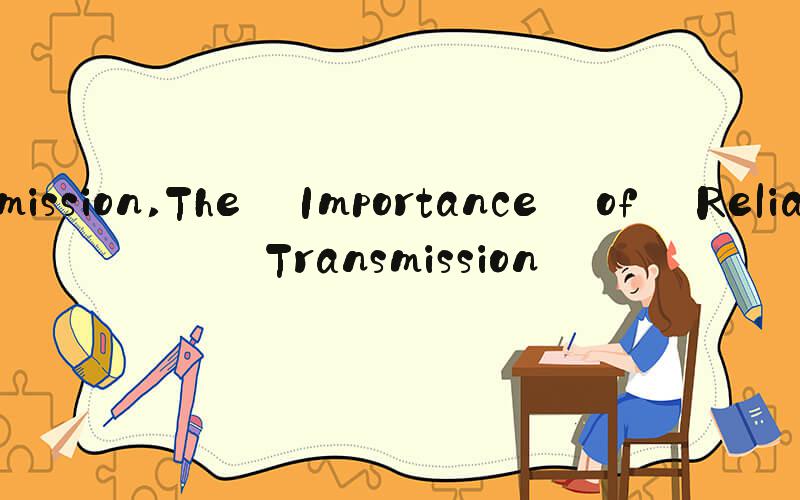
Introduction
Transmission refers to the process of transmitting or transferring information or data from one place to another. In the digital age, transmission plays a crucial role in communication, data exchange, and transportation. With advancements in technology, the methods and mediums of transmission have evolved, leading to faster and more reliable communication.
The Importance of Reliable Transmission
Reliable transmission is essential in various fields such as telecommunication, transportation, and data exchange. In telecommunication, reliable transmission ensures that communication is clear, interruption-free, and secure. In transportation, reliable transmission is crucial for ensuring the safety of passengers, particularly in airplanes and other forms of public transportation. Data exchange, on the other hand, demands reliable transmission as it is critical for businesses and other organizations that rely heavily on shared data.
Advancements in Transmission Technology
Over the years, there have been significant advancements in transmission technology. The introduction of fiber optics, for instance, has revolutionized the transmission of data and information. Fiber optics enables high-speed communication with low latency, making it ideal for large-scale data transfer. Another technological advancement that has revolutionized transmission is the development of wireless transmission. Wireless transmission allows for easy and quick transfer of data without the need for physical connections. This technology has the potential to spur the development of smart cities, healthcare, education, and other sectors.
Challenges in Transmission
Despite the advancements in transmission technology, there are still challenges that need to be addressed. One of the significant challenges is the issue of interference. Interference can affect the quality of transmission and lead to a loss of data and information. Latency is another challenge that arises from the distance between the source of transmission and the destination. High latency can lead to delays, making real-time communication difficult to achieve. Finally, the issue of security remains a crucial challenge in the transmission of sensitive information, particularly in the era of increasing cybersecurity threats.
The Future of Transmission
The future of transmission is bright, with significant developments expected in the field. With increased investment in research and development, new technologies are likely to emerge, leading to faster, more reliable, and secure transmission methods. The potential applications of transmission technology are vast, with the potential of transforming various sectors, including healthcare, transportation, energy, and communication. The development of 5G and 6G technology is expected to lead to faster speeds, lower latency, and more reliable communication, making it ideal for achieving real-time communication, remote surgery, and other innovative applications. Finally, the emergence of blockchain technology is likely to address the issue of security and enhance the privacy of transmission of sensitive information.
Conclusion
Transmission technology plays a critical role in communication, transportation, data exchange, and various other sectors. The advancements in transmission technology have revolutionized information exchange and led to faster, more reliable, and secure transmission methods. However, there are still challenges that need to be addressed, including interference, latency, and security concerns. Nevertheless, the future of transmission technology is promising, with significant developments expected to enhance the quality and reliability of data exchange and communication.

